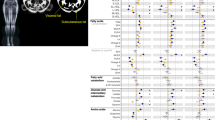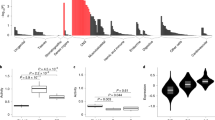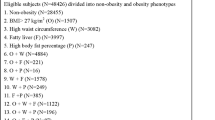Abstract
Cardiovascular disease (CVD) is a process whose pathogenetic mechanisms start very early in life. Recently, the importance of visceral adipose tissue (VAT) has been highlighted in the development of CVD. VAT does not always depend on body mass index (BMI) and has been implicated in unfavorable metabolic activity and cardiovascular adverse events. Abnormally high deposition of VAT is associated with metabolic syndrome, obesity-associated phenotype, and cardiometabolic risk factors. Although the importance of visceral fat has not been studied broadly or extensively in long-term studies in children and adolescents, it appears that it does not have the same behavior as in adults, it is related to the appearance of cardiac risk factors. In adolescents, it plays a role in the pathogenesis of CVD that occur later in adulthood. Excess body weight and adiposity may lead to the development of early myocardial and pathological coronary changes in childhood. The purpose of this review is to summarize the risk factors, the clinical significance, and the prognostic role of visceral obesity in children and adolescents. In addition, extensive reference is made to the most commonly used techniques for the evaluation of VAT in clinical settings.
Impact
-
Visceral obesity, plays an important role in cardiovascular health from very early in an individual’s life.
-
Visceral adipose tissue (VAT) distribution is not entirely related to body mass index (BMI) and provides additional prognostic information.
-
There is a need to pay more attention to the assessment of VAT in young people, to develop methods that would go beyond the measurement of only BMI in clinical practice and to identify individuals with excess visceral adiposity and perhaps to monitor its changes.
This is a preview of subscription content, access via your institution
Access options
Subscribe to this journal
Receive 14 print issues and online access
$259.00 per year
only $18.50 per issue
Buy this article
- Purchase on Springer Link
- Instant access to full article PDF
Prices may be subject to local taxes which are calculated during checkout



Similar content being viewed by others
Data availability
All the datasets on which the conclusions of the paper rely will be available to reader.
References
Fox, C. S. et al. Abdominal visceral and subcutaneous adipose tissue compartments: association with metabolic risk factors in the Framingham Heart Study. Circulation 116, 39–48 (2007).
Ruiz-Castell, M. et al. Estimated visceral adiposity is associated with risk of cardiometabolic conditions in a population based study. Sci. Rep. 11, 9121 (2021).
Katsi, V. et al. B-type natriuretic peptide levels and benign adiposity in obese heart failure patients. Heart Fail. Rev. 24, 219–226 (2019).
Walker, G. E., Marzullo, P., Ricotti, R., Bona, G. & Prodam, F. The pathophysiology of abdominal adipose tissue depots in health and disease. Horm. Mol. Biol. Clin. Investig. 19, 57–74 (2014).
Hiuge-Shimizu, A. et al. Absolute value of visceral fat area measured on computed tomography scans and obesity-related cardiovascular risk factors in large-scale Japanese general population (the VACATION-J study). Ann. Med. 44, 82–92 (2012).
Katz, S. L. et al. Creation of a reference dataset of neck sizes in children: standardizing a potential new tool for prediction of obesity- associated diseases? Bmc. Pediatr. 14, 159 (2014).
Kitahara, C. M. et al. Association between class III obesity (BMI of 40–59 kg/m2) and mortality: a pooled analysis of 20 prospective studies. PLoS. Med. 11, e1001673 (2014).
Coelho, M., Oliveira, T. & Fernandes, R. Biochemistry of adipose tissue: an endocrine organ. Arch. Med. Sci. 9, 191–200 (2013).
Ouwens, D. M., Sell, H., Greulich, S. & Eckel, J. The role of epicardial and perivascular adipose tissue in the pathophysiology of cardiovascular disease. J. Cell. Mol. Med. 14, 2223–2234 (2010).
Kortelainen, M. L. Adiposity, cardiac size and precursors of coronary atherosclerosis in 5 to 15-year-old children: a retrospective study of 210 violent deaths. Int. J. Obes. Relat. Metab. Disord. 21, 691–697 (1997).
Lifshitz, F. Obesity in children. J. Clin. Res. Pediatr. Endocrinol. 1, 53–60 (2008).
Drozdz, D. et al. Obesity and cardiometabolic risk factors: from childhood to adulthood. Nutrients 13, 4176 (2021).
Rodicio, M. M. et al. Early cardiac abnormalities in obese children and their relationship with adiposity. Nutrition 46, 83–89 (2018).
Reinehr, T. Expert reviews: Calculating cardiac risk in obese adolescents before and after onset of lifestyle intervention. Expert. Rev. Cardiovasc. Ther. 11, 297–306 (2013).
Geurtsen, M. L. et al. Liver fat and cardiometabolic risk factors among school-age children. Hepatology 72, 119–129 (2020).
Baker, J. L., Olsen, L. W. & Sørensen, T. I. A. Childhood body-mass index and the risk of coronary heart disease in adulthood. N. Engl. J. Med. 357, 2329–2337 (2007).
Lurbe, E. & Ingelfinger, J. Developmental and early life origins of cardiometabolic risk factors: novel findings and implications. Hypertension 77, 308–318 (2021).
Al-Attas, O. S. et al. Association of body mass index, sagittal abdominal diameter and waist-hip ratio with cardiometabolic risk factors and adipocytokines in Arab children and adolescents. Bmc. Pediatr. 12, 119 (2012).
De Simone, M. et al. Increased visceral adipose tissue is associated with increased circulating insulin and decreased sex hormone binding globulin levels in massively obese adolescent girls. J. Endocrinol. Invest 24, 438–444 (2001).
Goran, M. I. Visceral fat in prepubertal children: Influence of obesity, anthropometry, ethnicity, gender, diet, and growth. Am. J. Hum. Biol. 11, 201–207 (1999).
Morrison, J. A., Friedman, L. A. & Gray McGuire, C. Metabolic syndrome in childhood predicts adult cardiovascular disease 25 years later: the Princeton Lipid Research Clinics Follow-up Study. Pediatrics 120, 340–345 (2007).
Nakano, Y. Adult-onset diseases in low birth weight infants: association with adipose tissue maldevelopment. J. Atheroscler. Thromb. 27, 397–405 (2020).
Mínguez-Alarcón, L. et al. Association of mode of obstetric delivery with child and adolescent body composition. Jama. Netw. Open. 4, e2125161 (2021).
Wood, C. T. et al. Effects of breastfeeding, formula feeding, and complementary feeding on rapid weight gain in the first year of life. Acad. Pediatr. 21, 288–296 (2021).
Llewellyn, A., Simmonds, M., Owen, C. G. & Woolacott, N. Childhood obesity as a predictor of morbidity in adulthood: a systematic review and meta-analysis. Obes. Rev. 17, 56–67 (2016).
Tirosh, A. et al. Adolescent BMI trajectory and risk of diabetes versus coronary disease. N. Engl. J. Med. 364, 1315–1325 (2011).
Gonzalez-Muniesa, P. et al. Primers. Obes. Nat. Rev. Dis. 3, 17034 (2017).
Lee, J. W., Hong, Y. M. & Kim, H. S. Identification of cardiovascular risk factors in obese adolescents with metabolic syndrome. Front. Pediatr. 9, 745805 (2021).
Neeland, I. J. et al. International Atherosclerosis Society; International Chair on Cardiometabolic Risk Working Group on Visceral Obesity. Visceral and ectopic fat, atherosclerosis, and cardiometabolic disease: a position statement. Lancet Diabetes Endocrinol. 7, 715–725 (2019).
Eloi, J. C. et al. Quantification of abdominal fat in obese and healthy adolescents using 3 Tesla magnetic resonance Imaging and Free software for image analysis. PloS One 12, e0167625 (2017).
Ly, K. V. et al. Free-breathing magnetic resonance Imaging assessment of body composition in healthy and overweight children: An observational study. J. Pediatr. Gastroenterol. Nutr. 68, 782–787 (2019).
Mujkić, R. et al. Early childhood fat tissue changes-adipocyte morphometry, collagen deposition, and expression of CD163(+) cells in subcutaneous and visceral adipose tissue of male children. Int. J. Environ. Res. Public Health 18, 3627 (2021).
Caprio, S. et al. Hyperleptinemia: an early sign of juvenile obesity. Relations to body fat depots and insulin concentrations. Am. J. Physiol. 271, E626–E630 (1996).
Lumeng, C. N. et al. Aging is associated with an increase in T cells and inflammatory macrophages in visceral adipose tissue. J. Immunol. 187, 6208–6216 (2011).
Miard, S. & Picard, F. Obesity and aging have divergent genomic fingerprints. Int. J. Obes. (Lond.). 32, 1873–1874 (2008).
Spencer, S. A. & Hull, D. The effect of over-feeding newborn rabbits on somatic and visceral growth, body composition and long-term growth potential. Br. J. Nutr. 51, 389–402 (1984).
Cowey, S. L. et al. Abdominal obesity, insulin resistance, and colon carcinogenesis are increased in mutant mice lacking gastrin gene expression. Cancer 103, 2643–2653 (2005).
Wu, D., Ren, Z., Pae, M., Han, S. N. & Meydani, S. N. Diet-induced obesity has a differential effect on adipose tissue and macrophage inflammatory responses of young and old mice. Biofactors 39, 326–333 (2013).
Mauras, N. et al. Obesity without established comorbidities of the metabolic syndrome is associated with a proinflammatory and prothrombotic state, even before the onset of puberty in children. J. Clin. Endocrinol. Metab. 95, 1060–1068 (2010).
van Beijsterveldt, I. A. L. P., de Fluiter, K. S., Breij, L. M., van der Steen, M. & Hokken-Koelega, A. C. S. Fat mass and fat-free mass track from infancy to childhood: New insights in body composition programming in early life. Obes. (Silver Spring) 29, 1899–1906 (2021).
Pétrault, O. et al. Visceral adiposity links cerebrovascular dysfunction to cognitive impairment in middle-aged mice. Neurobiol. Dis. 130, 104536 (2019).
Alessio, N. et al. Obesity is associated with senescence of mesenchymal stromal cells derived from bone marrow, subcutaneous and visceral fat of young mice. Aging (Albany NY) 12, 12609–12621 (2020).
Kimura, M. et al. The effects of continuous and withdrawal voluntary wheel running exercise on the expression of senescence-related genes in the visceral adipose tissue of young mice. Int. J. Mol. Sci. 22, 264 (2020).
Nielsen, M. O. et al. Late gestation undernutrition can predispose for visceral adiposity by altering fat distribution patterns and increasing the preference for a high-fat diet in early postnatal life. Br. J. Nutr. 109, 2098–2110 (2013).
Xie, L. et al. Effects of prenatal low protein and postnatal high fat diets on visceral adipose tissue macrophage phenotypes and IL-6 expression in Sprague Dawley rat offspring. PLoS. One 12, e0169581 (2017).
Guan, H. et al. Adipose tissue gene expression profiling reveals distinct molecular pathways that define visceral adiposity in offspring of maternal protein-restricted rats. Am. J. Physiol. Endocrinol. Metab. 288, E663–E673 (2005).
Mirsoian, A. et al. Adiposity induces lethal cytokine storm after systemic administration of stimulatory immunotherapy regimens in aged mice. J. Exp. Med. 211, 2373–2383 (2014).
de Zegher, F., Lopez-Bermejo, A. & Ibánez, L. Adipose tissue expandability and the early origins of PCOS. Trends Endocrinol. Metab. 20, 418–423 (2009).
Simoni, P., Guglielmi, R. & Aparisi Gómez, M. P. Imaging of body composition in children. Quant. Imaging Med. Surg. 10, 1661–1671 (2020).
Naik, Y., Allen, D. B., Eickhoff, J. & Carrel, A. L. Stabilization of BMIz score is associated with a decrease in visceral fat in children with obesity. Horm. Metab. Res. 52, 527–531 (2020).
Dong, Y., Bai, L., Cai, R., Zhou, J. & Ding, W. Visceral adiposity index performed better than traditional adiposity indicators in predicting unhealthy metabolic phenotype among Chinese children and adolescents. Sci. Rep. 11, 23850 (2021).
Wu, A. J. et al. Associations of midchildhood to early adolescence central adiposity gain with cardiometabolic health in early adolescence. Obes. (Silver Spring) 29, 1882–1891 (2021).
Umano, G. R. et al. A low visceral fat proportion, independent of total body fat mass, protects obese adolescent girls against fatty liver and glucose dysregulation: a longitudinal study. Int. J. Obes. (Lond.). 43, 673–682 (2019).
Kabir, M. et al. Molecular evidence supporting the portal theory: a causative link between visceral adiposity and hepatic insulin resistance. Am. J. Physiol. Endocrinol. Metab. 288, E454–E461 (2005).
Medrano, M. et al. Associations of fitness and physical activity with specific abdominal fat depots in children with overweight/obesity. Scand. J. Med. Sci. Sports 32, 211–222 (2022).
Brambilla, P. et al. Persisting obesity starting before puberty is associated with stable intraabdominal fat during adolescence. Int. J. Obes. Relat. Metab. Disord. 23, 299–303 (1999).
Maffeis, C. et al. Insulin sensitivity is correlated with subcutaneous but not visceral body fat in overweight and obese prepubertal children. J. Clin. Endocrinol. Metab. 93, 2122–2128 (2008).
Trandafir, L. M. et al. Waist circumference a clinical criterion for prediction of cardiovascular complications in children and adolescences with overweight and obesity. Med. (Baltim.) 99, e20923 (2020).
Asayama, K. et al. Threshold values of visceral fat and waist girth in Japanese obese children. Pediatr. Int. 47, 498–504 (2005).
Weiss, R. et al. The “Obese Insulin-Sensitive” adolescent: Importance of adiponectin and lipid partitioning. J. Clin. Endocrinol. Metab. 90, 3731–3737 (2005).
Suzuki, R. et al. Abdominal wall fat index, estimated by ultrasonography, for assessment of the ratio of visceral fat to subcutaneous fat in the abdomen. Am. J. Med. 95, 309–314 (1993).
Satake, E. et al. Age and sex differences in fat distribution in non-obese Japanese children. J. Pediatr. Endocrinol. Metab. 23, 873–878 (2010).
Staiano, A. E., Broyles, S. T., Gupta, A. K. & Katzmarzyk, P. T. Ethnic and sex differences in visceral, subcutaneous, and total body fat in children and adolescents. Obes. (Silver Spring) 21, 1251–1255 (2013).
de Ridder, C. M. et al. Body fat distribution in pubertal girls quantified by magnetic resonance imaging. Int. J. Obes. Relat. Metab. Disord. 16, 443–449 (1992).
Owens, S. et al. Effect of physical training on total and visceral fat in obese children. Med. Sci. Sports Exerc. 31, 143–148 (1999).
Marketou, M. E. et al. Bradykinin receptors gene expression in white adipose tissue in nondiabetic patients with coronary artery disease. Coron. Art. Dis. 29, 329–335 (2018).
Cabrera-Rego, J. O. et al. Epicardial fat thickness correlates with carotid intima-media thickness, arterial stiffness, and cardiac geometry in children and adolescents. Pediatr. Cardiol. 35, 450–456 (2014).
Polat, T. B., Urganci, N., Caliskan, K. C. & Akyildiz, B. Correlation of abdominal fat accumulation and stiffness of the abdominal aorta in obese children. J. Pediatr. Endocrinol. Metab. 21, 1031–1040 (2008).
Hacihamdioğlu, B. et al. Abdominal obesity is an independent risk factor for increased carotid intima- media thickness in obese children. Turk. J. Pediatr. 53, 48–54 (2011).
Iwashima, S. et al. Abdominal obesity is associated with cardiovascular risk in Japanese children and adolescents. J. Pediatr. Endocrinol. Metab. 24, 51–54 (2011).
McGill, H. C., McMahan, C. A., Malcom, G. T., Oalmann, M. C. & Strong, J. P. for the PDAY Research Group. Effects of serum lipoproteins and smoking on atherosclerosis in young men and women. Arterioscler. Thromb. Vasc. Biol. 17, 95–106 (1997).
McGill, H. C. Jr et al. Associations of coronary heart disease risk factors with the intermediate lesion of atherosclerosis in youth. Arterioscler. Thromb. Vasc. Biol. 20, 1998–2004 (2000).
Newman, W. P. et al. Relation of serum lipoprotein levels and systolic blood pressure to early atherosclerosis. N. Engl. J. Med. 314, 138–144 (1986).
Berenson, G. S. et al. Association between multiple cardiovascular risk factors and atherosclerosis in children and young adults. The Bogalusa Heart Study. N. Engl. J. Med. 338, 1650–1656 (1998).
Dencker, M. et al. Body fat, abdominal fat, and body fat distribution is related to left atrial diameter in young children. Obes. (Silver Spring) 20, 1104–1108 (2012).
Humphries, M. C. et al. Relations of adiposity and effects of training on the left ventricle in obese youths. Med. Sci. Sports Exerc. 34, 1428–1435 (2002).
Mitchell, B. M. et al. Left ventricular structure and function in obese adolescents: relations to cardiovascular fitness, percent body fat, and visceral adiposity, and effects of physical training. Pediatrics 109, E73–E77 (2002).
Kozakova, M. et al. Hemodynamic overload and intra-abdominal adiposity in obese children: Relationships with cardiovascular structure and function. Nutr. Metab. Cardiovasc. Dis. 26, 60–66 (2016).
Park, M. H. et al. Adiposity and carotid-intima media thickness in children and adolescents: a systematic review. Bmc. Pediatr. 15, 161 (2015).
Bassols, J. et al. Perirenal fat is related to carotid intima-media thickness in children. Int. J. Obes. (Lond.). 42, 641–647 (2018).
Hartiala, O. et al. Coronary heart disease risk factors, coronary artery calcification and epicardial fat volume in the Young Finns Study. Eur. Heart J. Cardiovasc Imaging 16, 1256–1263 (2015).
Wu, A. J., Rifas-Shiman, S. L., Taveras, E. M., Oken, E. & Hivert, M. F. Associations of DXA-measured abdominal adiposity with cardio-metabolic risk and related markers in early adolescence in Project Viva. Pediatr. Obes. 16, e12704 (2021).
Wu, T. et al. Visceral adiposity and respiratory outcomes in children and adults: a systematic review. Int J. Obes. (Lond.). 46, 1083–1100 (2022).
Author information
Authors and Affiliations
Contributions
M.E.M.: conceptualization, methodology, writing - original draft preparation, final approval of the draft. N.E.S.B.: writing, reviewing. K.F., A.P., S.Z., A.T., and E.S.: writing. S.M.: writing, reviewing. G.K.: reviewing and editing, supervision.
Corresponding author
Ethics declarations
Competing interests
The authors declare no competing interests.
Additional information
Publisher’s note Springer Nature remains neutral with regard to jurisdictional claims in published maps and institutional affiliations.
Rights and permissions
Springer Nature or its licensor (e.g. a society or other partner) holds exclusive rights to this article under a publishing agreement with the author(s) or other rightsholder(s); author self-archiving of the accepted manuscript version of this article is solely governed by the terms of such publishing agreement and applicable law.
About this article
Cite this article
Marketou, M.E., Buechler, N.S., Fragkiadakis, K. et al. Visceral fat and cardiometabolic future in children and adolescents: a critical update. Pediatr Res 94, 1639–1647 (2023). https://doi.org/10.1038/s41390-023-02709-9
Received:
Revised:
Accepted:
Published:
Issue Date:
DOI: https://doi.org/10.1038/s41390-023-02709-9



